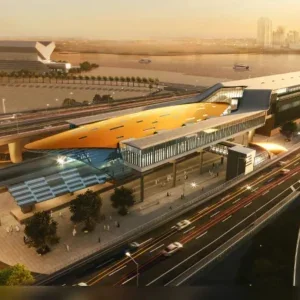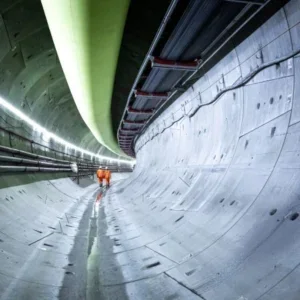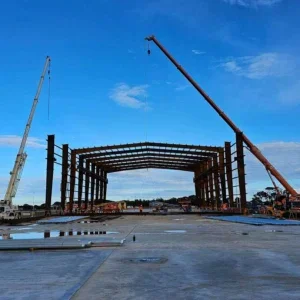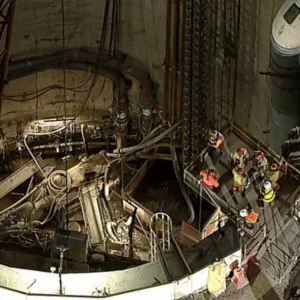One miner lost his life in early November when a tunnel heading at the Washington DC Dulles International Airport collapsed.
Immediate rescue efforts were hampered by the continued instability of the collapsed zone and the body of the trapped worker was recovered through a surface excavation four and a half days later. Several other crew members near the heading were not injured when it caved in at about 7pm on the evening of 1 November.
Workers for contractor Kiewit Construction were excavating the top heading of the 250m long x100m2 tunnel when the collapse occurred. The tunnel is the first stage of a $3.4BN expansion at Washington DC’s Dulles airport and passes beneath two airport taxi-lanes to provide a walkway connection between the main terminal and the mid-field concourse B.
Project owner is the Metropolitan Washington Airports Authority (MWAA). Project designer for the first tunnel is ICF Kaiser and DSC (Dr Sauer Corporation), specialist subconsultant for the tunnel’s selected NATM design. MWAA’s programme management and supervision team is Parsons Management Consultants (PMC), a JV of Parsons Transportation, Parsons Brinckerhoff, DMJM, and Delon Hampton Associates.
Kiewit started work on the $16.5M contract in February 2000 using a compact Dosco roadheader to excavate the tunnel in both directions from a temporary intermediate access ramp in the meridian between taxi-lanes airside of the main terminal (illustration above). Under a cover of less than a tunnel diameter – about 4.5m – excavation was designed as a controlled sequence of topheading, bench and invert with the topheading divided into two side wall drifts and excavated in staggered rounds. The topheadings were being completed before starting the bench and invert.
According to Kiewit spokesperson, Jerry Pheffer, excavation of the topheading north towards the main terminal was complete and crews were within 18m of completing the southward topheading to concourse B when the collapse occurred. Ground conditions are reported as mixed face comprising clay, soils and competent siltstone. The cave-in at tunnel level did not migrate to collapse of the surface and Peffer told T&TI that work had been progressing smoothly prior to the incident. The collapse is now the subject of an investigation by Virginia’s Occupational Safety and Health.
According to NATM design details, each 1m-1.6m round of the topheading drifts was being preceded with systematic spiling and each drift was progressing within one round of the other with the leading drift four rounds ahead of the trailing drift.
Primary support comprises an immediate 50mm flash layer of steel-fibre reinforced shotcrete (SFRS) followed by lattice girders on 1m-1.6m centres in the top heading and bench excavations, followed by another 150mm layer of 35kg/m3 SFRS. The tunnel is finished with a layer of plain shotcrete with a PVC waterproofing membrane and a 300mm thick reinforced in-situ concrete final lining.
Air traffic at the airport was not affected by the incident but the area, including the 40x40x10m deep rescue excavation from the surface, was temporarily cordoned off and the ‘mobile lounge’ vehicles that shuttle passengers between terminals had to be diverted to other docking bays at concourse B.
An investigation into the tunnel collapse must be served within 180 days of the accident under the rules of the governing US federal Occupational Safety and Health Administration.
Dulles Airport lies within the Commonwealth of Virginia, which administers its own federally-approved occupational safety and health programme through its Department of Labor and Industry (DLI) and a three-member team, including a federal OSHA representative and a structural engineer from the federal Mining, Minerals and Energy Department, have started an investigation.
According to Nancy Jakubec, director of cooperative programs for the Virginia Department of Labor and Industry, the investigation will also involve indepth examination of the construction process and machinery used. "Following the investigation, the case is reviewed by the compliance director, the Office of Legal Support and the VOSH deputy commissioner of the DLI’s central office. If it is determined that safety standards have been violated, the proposed citations and penalties are issued." Penalties are calculated according to strict guidelines. Violations that cause fatalities attract the maximum fine, which in Virginia is $70,000.
"This is not an indicator of the severity of the violation or the value of a life," said Jakubec, "and fatalities may not necessarily involve violations of safety and health regulations. There is however a criminal charge of manslaughter in Virginia which can be pursued following investigations into accidents that cause loss of life."
Related Files
Design of the tunnel at Washington’s Dulles Airport that collapsed killing one miner







